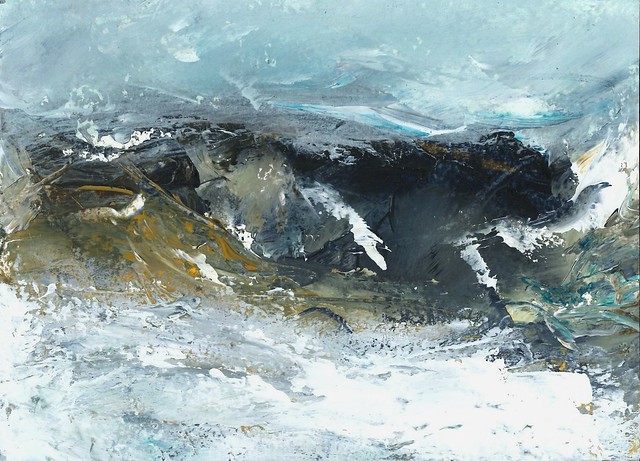 |
Edward Bawden, Brighton Pier, 1958, (detail) Linocut on paper, Trustees of the Cecil Higgins Art Gallery (The Higgins Bedford), © Estate of Edward Bawden
|
So here is my excuse for not posting in months...
Major Edward Bawden show to bring unseen works into the spotlight
23 May - 9 September 2018
In summer 2018 Dulwich Picture Gallery will present a major retrospective of work by the celebrated British artist and designer, Edward Bawden RA CBE (1903-89). It will be the first national museum show since his death and the most wide-ranging to date, including a number of previously unseen works from the family’s private collection.
Widely respected as an innovative graphic designer, book illustrator and printmaker, Edward Bawden is best known today for his monumental linocuts and for the witty designs he made for companies like Shell and Fortnum & Mason. Meanwhile his achievements as a fine artist have been largely forgotten. Along with Paul Nash and Eric Ravilious, Bawden reinvented watercolour for the 20th century, and a central aim of this exhibition is to bring this work back into public view.
Featuring 170 works, half of them from private collections, this exhibition will explore every aspect of Bawden’s 60-year career, revealing his humour, skill and versatility. He refused to see a distinction between fine art and commercial design, and in this spirit the works will be arranged thematically to follow the evolution in his style and the constant creative dialogue between media and disciplines. Highlights include a display of Bawden’s rarely-seen war portraits, as well as archive material such as his personal blotter, on loan for the first time.
Bawden took a tremendous delight in observing the world ‘off duty’, and the exhibition will open with a wide-ranging display of works devoted to leisure and pleasure. These include a large map of Scarborough decorated with holidaymakers and mermaids, watercolours of Newhaven and Baghdad, and posters advertising films and London sights.
The exhibition will go on to showcase watercolours, engraving and linocuts on the theme of plants and gardens, including an unfinished textile design, on display for the first time. Throughout the exhibition, preparatory studies, drawings and illustrated letters will be displayed - rarely exhibited these will add a colourful personal dimension so the show whilst offering insights into Bawden’s creative mind.
Other rooms will reflect Bawden’s fascination with places and architecture, with watercolours and linocuts depicting Essex churches and Ethiopian palaces. As an official war artist Bawden spent the years 1940-45 travelling around North Africa, the Middle East and Europe, and alongside paintings of the places he visited he created a remarkable series of portraits, around twenty of which will be exhibited in the show. Up to this point Bawden’s depictions of the human figure were rarely bigger than a matchbox, but now he successfully battled his own feelings of inadequacy as an artist to produce some of the most compelling artworks of the conflict. Iraqi Jews, Kurds and Marsh Arabs will take their place, alongside servicemen of different African nations, revealing the range of people Bawden encountered and his warm treatment of all.
The exhibition will culminate with an exploration of Bawden’s lifelong love of storytelling. One wall will be covered in original drawings, almost all from private collections, that span every decade from the 1920s to the 1980s. Another will feature studies for some of Bawden’s best-loved murals, while the last works focus on creatures real and imaginary, including several linocuts from his much-loved series, Aesop’s Fables. Highlights include designs for Fortnum & Mason and Twinings, alongside fanciful illustrated books created by Bawden for his children.
Edward Bawden will be curated by James Russell, who curated Eric Ravilious at Dulwich Picture Gallery in 2015. He is the author of The Lost Watercolours of Edward Bawden (Mainstone Press), a study of Bawden’s 1930s paintings, as well as titles devoted to Eric Ravilious and other artists of the period. Speaking of the show, he said:
"This exhibition celebrates Bawden's many achievements across all the disciplines he mastered, while also offering visitors an intimate portrait of the artist through studies, drawings and illustrated letters. Bawden's unrivalled skill as a designer, irrepressible sense of humour and profound feeling for place will flow through the exhibition, offering visitors a varied, entertaining and sometimes moving experience.”
Loans have been secured from a number of private collections, as well as a wide range of institutions including the Imperial War Museum, the Manchester Art Gallery, the Fry Art Gallery and the major lender, the Cecil Higgins Collection, Bedford, home of the Edward Bawden archive. An extensive full colour catalogue will accompany the exhibition.














